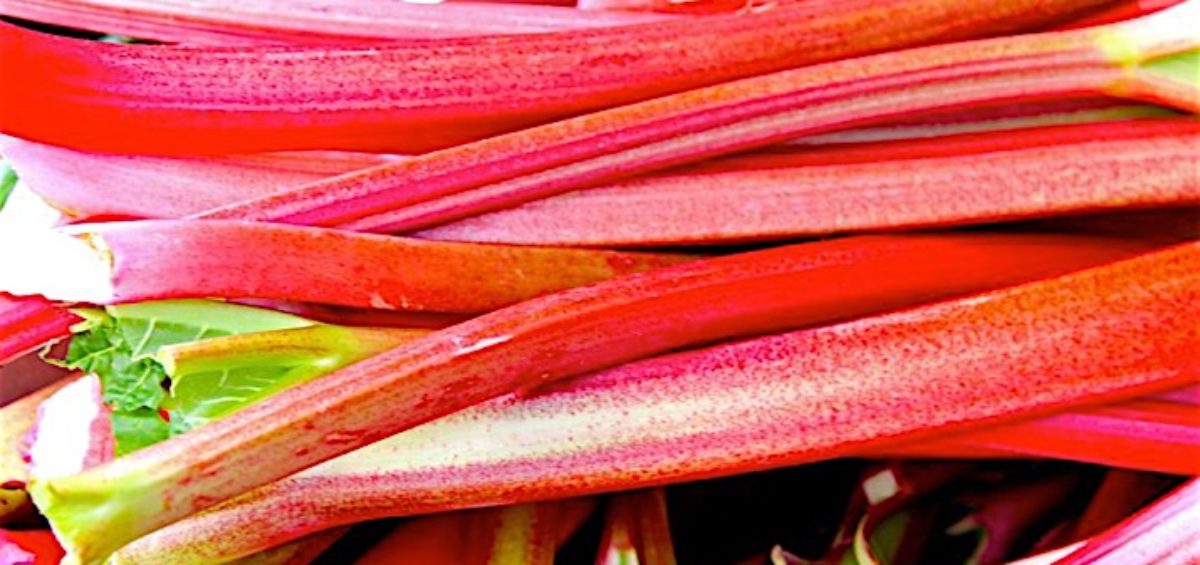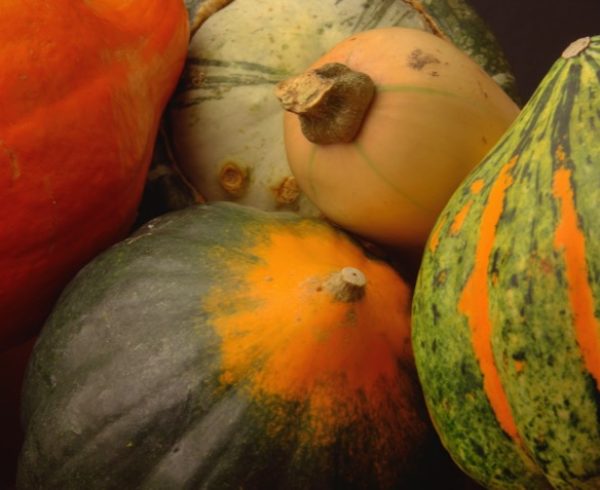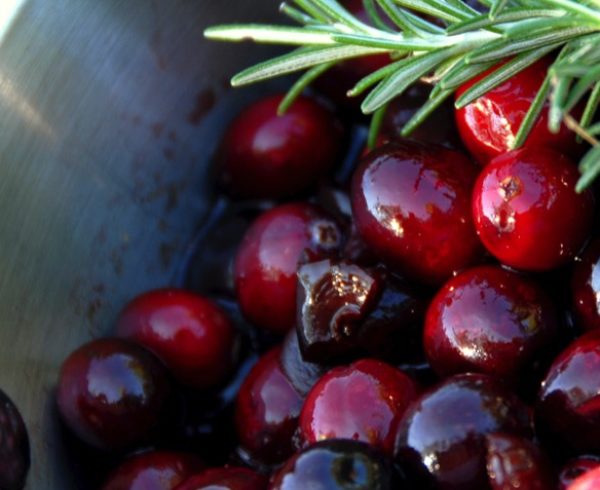It is starting to feel like spring might stick around for a little while here in Wisconsin, and hopefully our gardens are now safe from those early-spring frosts. Often one of the first crops home gardeners and farmers find popping up in their plots are cheerful red and pink stalks. So, let’s talk about how to use that rhubarb!
Season:
Growers usually harvest this vegetable (I know, I know—we use it like a fruit!) starting in May or June, depending on the region and climate.
Health Benefits:
Rhubarb packs in vitamin C, fiber, vitamin K, and B-complex vitamins. It is low in calories, but often sugar gets heaped on to transform this plant into delectable desserts. So, if you’re thinking about your fitness, consider learning to use rhubarb in new, unexpected ways.
How to Select:
Select firm stalks with bright color—red, green, or some variant of those colors (pink!). Usually, stalk size does not matter; though, very large stalks can be pithy.
How to Store:
Rhubarb is a notable exception to the “use the whole plant” trend—its leaves are poisonous (they contain quite a lot of oxalic acid). Therefore, you should always trim and discard them. Once the leaves are removed, store stalks bagged in the refrigerator for up to a week. If the stalks get limp, place them in a bowl with ice cold water to refresh them. When your backyard has an abundance, it can be chopped and frozen raw, then easily used in dishes where it is cooked (think cobblers and pies or sauces).
How to Prepare:
Rhubarb is often used in pies, crisps, cobblers, and other sweet applications (most Wisconsin grandmother’s recipe boxes have a recipe for some sort of cobbler), but can be used in savory dishes, too. Think about adding tart cooked rhubarb sauce to seafood and fish or chicken. The tartness can work well in place of vinegar, as shown in this week’s rhubarb vinaigrette recipe.
Recipe: Rhubarb Vinaigrette
Total Time: 5 minutes
Servings: 6
A great spring salad to accompany this dressing would be shaved asparagus (just use your peeler to take off thin slices), toasted almonds and pea shoots, perhaps a light dusting of Parmesan or some chunks of pulled mozzarella.
Ingredients
- 1/4 cup rhubarb juice (one stalk)
- 1/2 cup extra virgin olive oil
- 2 tablespoons raw honey
- salt to taste
Preparation
Juice the rhubarb using a juicer or use a blender and strain out the juice. Then, whisk the rhubarb juice and remaining ingredients together.
Nutritional Information
Calories: 177, Fat: 17 g, Cholesterol: 0 mg, Sodium: 1 mg, Carbohydrate: 6 g, Dietary Fiber: 0 g, Protein: 0 g
Recommended reading:
If you’re looking for something unique to tempt your palate, check out the Rhubarb Ginger Cordial recipe used in Rhubarb Gimlets in the cookbook Put Em Up! Fruit by Sherri Brooks Vinton. It is available at the Hudson Area Public Library.
What about you?
Have you ever tried rhubarb in savory dishes? Share your thoughts and recipes on our Facebook page!
Want to see more local, fresh produce in your fridge? Consider becoming an owner of the Hudson Grocery Cooperative—which will be a locally-owned, full-service grocery store that offers diverse food and product choices including organic, sustainable and regionally sourced options for our community.
Image and recipe credit: https://www.welcometothetable.coop/








1 comment